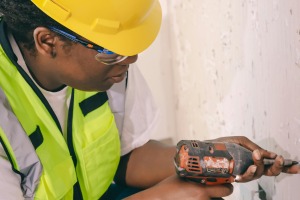

Market report
Sustainability & construction industry
Explore market reports on contractors and stay informed about the latest trends and insights in the industry at USP Research's Contractor Monitor.
News I published 15 November 2023 I Henri Busker
Who are the main influencers for sustainable construction?
Standing on-site, googling from work or attending a trade show – at some point or another, you’ll no doubt get to talking about sustainability. The specs and choices are ready – insulation here, cladding there, an e-mail about carbon-neutral this or circular that. In other words, the pressure to build better is everywhere – but who’s actually making the calls on sustainability? Who’s setting the tone, and who’s just along for the ride?
Let’s break the interested parties down.
Who’s Driving It?
You know how every project has that one voice that carries more weight than the rest? The same goes for sustainability.
Across Europe, contractors consistently point to architects as the most influential group when it comes to sustainable construction, named by 28% of respondents. National governments follow at 23%, with contractors themselves in third at 16%.
But zoom in by country, and things shift. In Germany, Spain and Belgium, architects are the top influence. In France, contractors rate themselves higher. In the Netherlands, it’s the government and local authorities leading; architects don’t even make the top three.
Government Plays a Central Role
It’s not just about who’s at the drawing board, it’s also who’s writing the rules.
Combine national and local governments, and they become the top driver of sustainable construction across Europe. In the UK, Netherlands and Belgium, contractors see the national government as the biggest force. However, in France and Spain, we’re seeing a different story – government falls back, and industry takes the lead.
Meaning? Regulation matters, but it’s not equally effective everywhere.
More Players Entering the Picture
When everyone starts to get involved, it gets harder to tell who’s steering. Because everyone points at someone else.
Contractors are increasingly noticing influence from other corners – developers, material manufacturers, even end users. In Italy and Poland, building owners and manufacturers are gaining visibility as drivers of sustainable decision-making.
But the influence is spread thin; many professionals say it’s the government’s job to lead, and few actually acknowledge their own part in pushing things forward. For instance, 66% of influential stakeholders think circularity will succeed only when government mandates enforce use. Most also say the industry needs a mindset shift. The contradiction is clear – they know they have influence, but many still avoid owning it.
The decisions mainly come down to 30% of architects and 33% of contractors. A somewhat larger group say they co-decide, with very few saying they’re not involved at all.
Knowledge and Labor are the Real Bottlenecks
You’re only as strong as your crew and what they know. In many countries, there’s still confusion around what sustainable construction actually means. In Poland and Italy, the knowledge gap is especially wide, and without clear definitions or training, it’s hard to implement change – even if the intent is there. The UK and Netherlands lead overwhelmingly in green awareness, mostly due to well-established regulation, public awareness campaigns and a focus on sustainability in educational programs for construction professionals.
Skilled labor is another major constraint. In 2023, we saw the greatest job vacancy rate in the EU; Germany, the Netherlands and Poland reported highest shortage levels (55%, 55% 47% respectively) and forecasts show the problem getting worse across the continent. No amount of policy will help if there’s no one qualified around to carry out the work.
Countries must significantly boost investment in education, encourage people to choose a career in sustainable construction, and expand training programs to attract and train a skilled workforce capable of implementing green technologies and sustainable practices.
Building Material Suppliers Positioned to Help
But beyond workforce and knowledge, the supply chain plays its own role – especially the companies that make the materials.
Providing clarity, educating the market about sustainability, and providing sustainable materials are key services construction companies expect from building material suppliers. They can play a vital role in stimulating and supporting construction companies in working in a more sustainable way.
That’s why 15% of the industry believe they carry weight in sustainable processes. But that number doesn’t reflect the potential. 32% use sustainable materials, 23% focus on education or informing the market, 13% are innovators and 12% the practicals – they reduce waste during production. So, there’s both appetite and room for improvement.
Final Word
There’s no single answer to who drives sustainable construction – it depends on where you are, what you expect and who you ask. But the responsibility is clearly shared. Architects and contractors are already making the decisions. Governments are setting the rules. Manufacturers are expected to support it all. Waiting for someone else to lead only delays the inevitable. If you’re in the business of building, you’re either part of the solution – or part of the problem.
If you want to stay relevant in this space, make sure you know where your influence lies – and use it.






